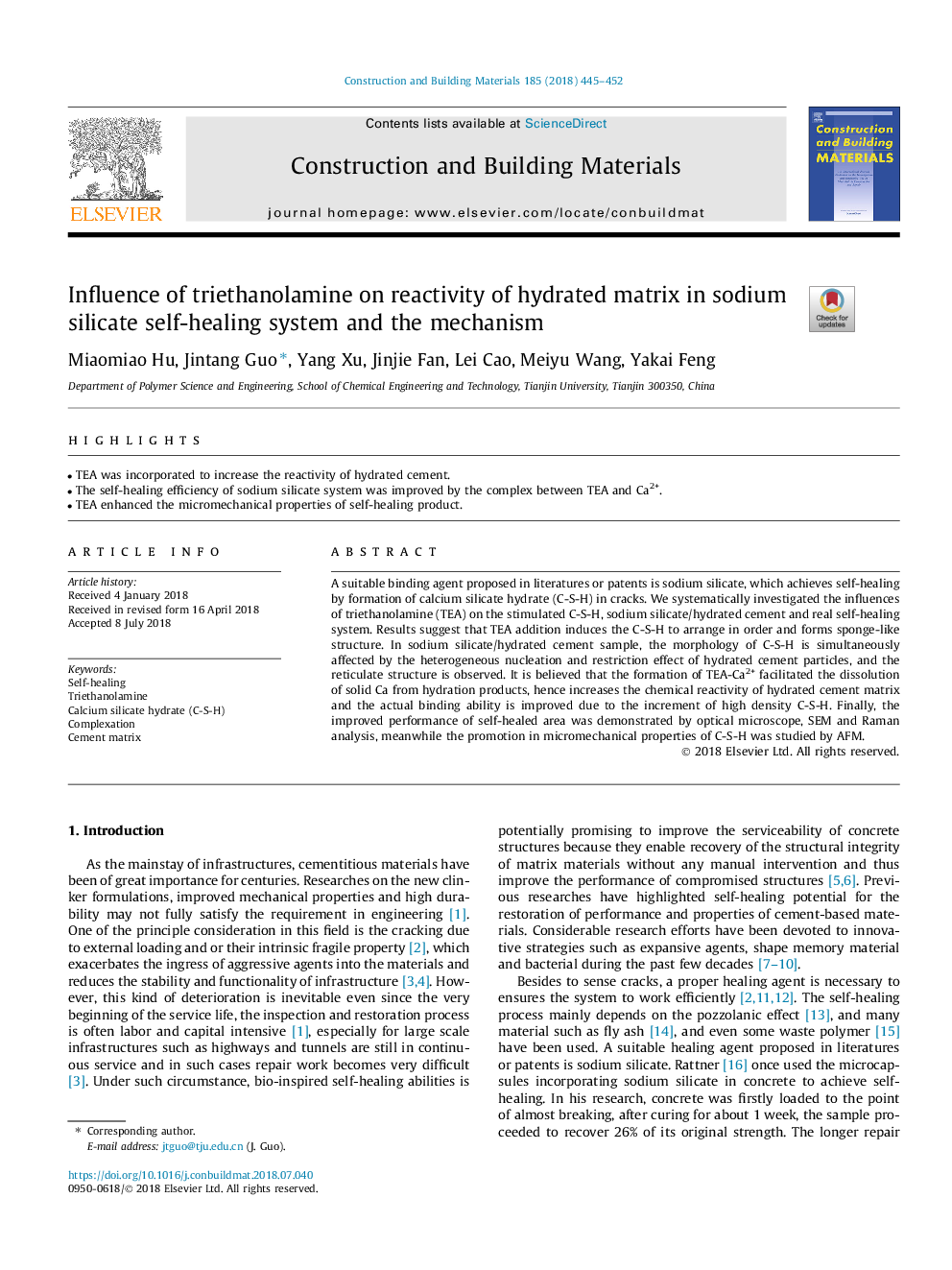| Article ID | Journal | Published Year | Pages | File Type |
|---|---|---|---|---|
| 6711856 | Construction and Building Materials | 2018 | 8 Pages |
Abstract
A suitable binding agent proposed in literatures or patents is sodium silicate, which achieves self-healing by formation of calcium silicate hydrate (C-S-H) in cracks. We systematically investigated the influences of triethanolamine (TEA) on the stimulated C-S-H, sodium silicate/hydrated cement and real self-healing system. Results suggest that TEA addition induces the C-S-H to arrange in order and forms sponge-like structure. In sodium silicate/hydrated cement sample, the morphology of C-S-H is simultaneously affected by the heterogeneous nucleation and restriction effect of hydrated cement particles, and the reticulate structure is observed. It is believed that the formation of TEA-Ca2+ facilitated the dissolution of solid Ca from hydration products, hence increases the chemical reactivity of hydrated cement matrix and the actual binding ability is improved due to the increment of high density C-S-H. Finally, the improved performance of self-healed area was demonstrated by optical microscope, SEM and Raman analysis, meanwhile the promotion in micromechanical properties of C-S-H was studied by AFM.
Related Topics
Physical Sciences and Engineering
Engineering
Civil and Structural Engineering
Authors
Miaomiao Hu, Jintang Guo, Yang Xu, Jinjie Fan, Lei Cao, Meiyu Wang, Yakai Feng,
